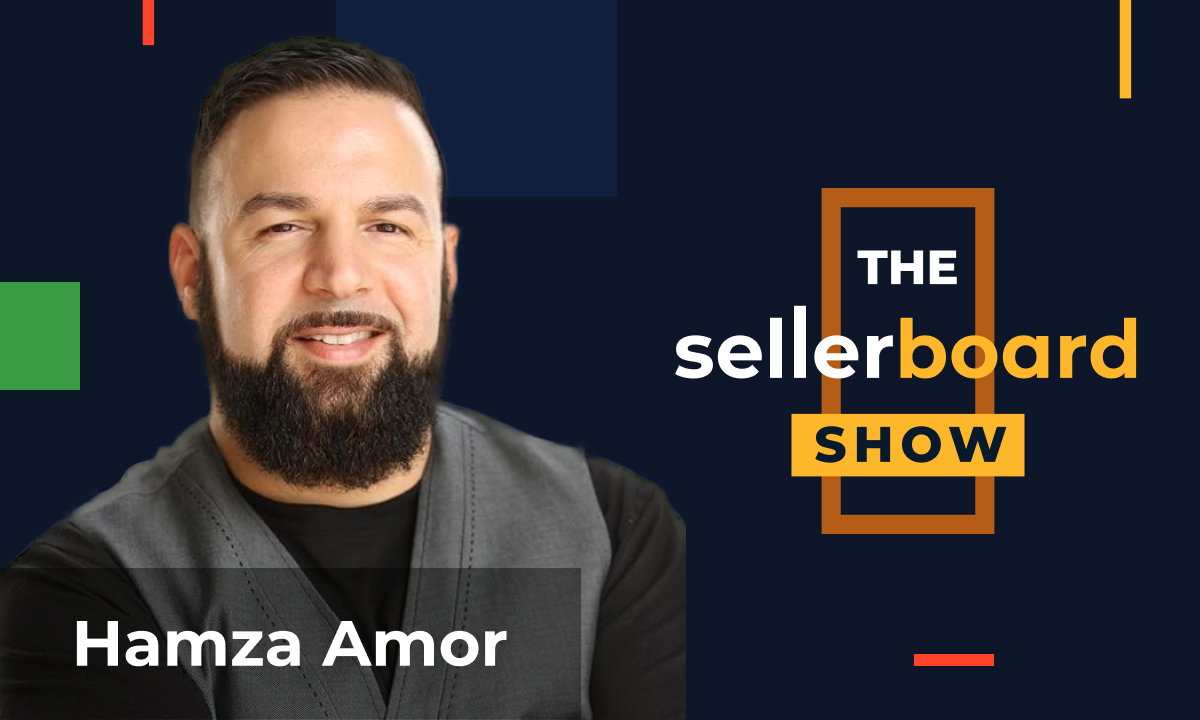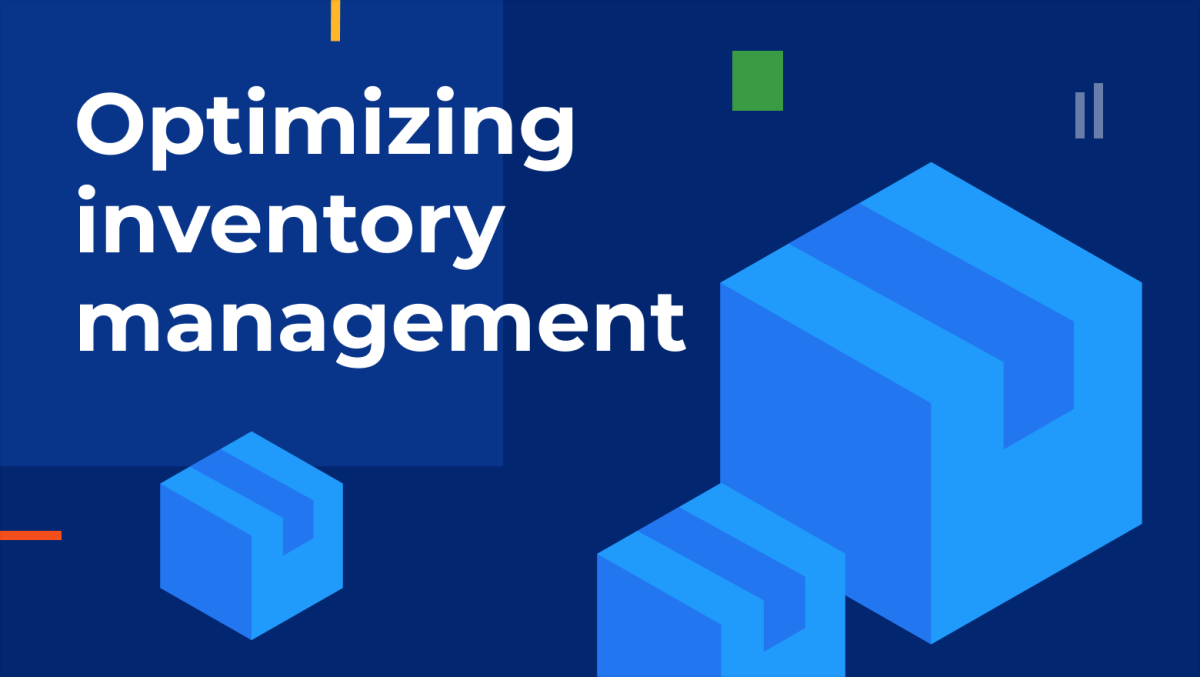Our guest on the 12th of October, 2020, on the sellerboard show was Meghla Bhardwaj from India Sourcing trip.
We talked about product sourcing and:
- How to communicate your requirements to your suppliers
- How to make sure the product is right for your market
- What is continuous monitoring and how to implement it in your sourcing process?
Watch the full video here: https://www.youtube.com/watch?v=vS3s585AJhw
[00:00:08] Hey, everybody, welcome to the next episode of The sellerboard. show. My name is Vladi Gordon and my today’s guest is Meghla from India Sourcing. We’re going to talk about sourcing. So how to make sure the product is right for your market and for you, how to communicate your requirements specifically and clearly to your suppliers and what is continuous monitoring and how do you implement it in your sourcing process? So stay tuned. This is going to be valuable for new sellers, but also for experienced private label sellers. Before we start. Check out our software sellerboard, itis a profit analytics tool for Amazon sellers. And our vision is to be the world’s most accurate and powerful financial analytics tool, the prices started only 15 dollars a month and there’s a free trial. So make sure you check out our link below and don’t let’s start the show.
[00:01:09] Hi, Meghla. How are you?
[00:01:11] I’m great, Vladi, how are you today?
[00:01:13] Great, thanks. Thanks for joining us today. So tell us a little bit about yourself. What’s your background and how did you get into this sourcing story, I guess?
[00:01:26] Yes, and my background is actually in sourcing, I’ve been in the sourcing industry for almost 20 years now. I worked in India and China, Philippines, and I’m currently based in Singapore. And in fact, I lived in China for almost 10 years. And that’s where I got most of my experience in sourcing and most of my career, I worked with a company called Global Sources, which is basically a B2B sourcing platform. And so when I was in China, I used to publish research reports for global sources, and we used to visit factories and talked to suppliers about how products are manufactured and talked to buyers as well about what kinds of issues they’re facing when they’re importing products from China. So, yeah, and then recently in the last year, I started focusing a little bit more on India, because India is an emerging saucing destination now. And I launched the sourcing trip for Amazon, an e-commerce sellers called India Sourcing Trip, where we basically take Amazon sellers to India, attend to teach them all about how to source from India what kinds of products are sourced there and everything. So, yeah, I mean, that’s my story.
[00:02:30] Well, OK, so I have a lot of questions. Let’s start with sourcing in general. So when I was a seller, I’m going to tell you how I started. So back then it was, I guess, like six years ago I would just find a supplier on Alibaba and basically write them a message and then order. And, you know, I didn’t really know a lot about quality assurance and stuff. So the problem with that is I kind of got into quality issues relatively quickly. So can you walk us through a process for somebody who was just started on Amazon and maybe it was lucky with their first order, with the first supplier? Walk us through the process how the scaling of this sourcing looked like and on what should you basically do as a seller?
[00:03:22] Yeah, absolutely. So there are a couple of yeah. So there are a couple of things that I always suggest, you know, sellers to keep in mind. First of all, there are all types of suppliers out there, whether in China or India. There are large suppliers that are producing, you know, millions of pieces a day. There are small workshops that are producing maybe just thousands of pieces. So make sure that you are able to find a supplier that is right for you based on your specific requirements. If you are, for example, importing for Europe, let’s say, and if you’re importing a product that has regulatory compliance requirements, then you need to make sure that your supplier is familiar with those requirements. Don’t go to a supplier that only sources are only sells to, you know, let’s say Africa, because they will have no idea of the requirements in the UK or the US. So that’s number one. Make sure that you’re sourcing from a supplier. That’s right. For your requirements because each buyer is different. Right. And then the second thing that I would say is one of the main reasons there are quality issues in sourcing is because of miscommunication. And this really surprises people because they were like, no, but I told my supplier what I wanted. You think you told your supplier what wanted, what you wanted, but you actually did not. Because in sourcing, you have to be so clear about each and every material and specification that you want in your product. And you should not let the supplier assume anything, because if you if you leave out even a tiny detail, then they’re going to just use the cheapest product or what they think you want. So that’s the other thing. Communicate your requirements very, very clearly.
[00:05:03] And then the third thing is continuous monitoring. I mean, if you’re even big companies like Wal-Mart and Kmart, they also like send their representatives to the factory. In fact, they have offices in China to continuously monitor quality and production coming out. So in China, there are different quality levels that can be produced, right? I mean, there’s the iPhone being produced that is the highest quality product ever. And there’s also like cheap widgets coming out. So it really is down to the buyer, to the importer to dictate and monitor what exactly they want coming out from the factory. So I think those are the three main principles I would say, that you have to keep in mind when you’re sourcing.
[00:05:46] So look, what works for them is said. The first one is to make sure that it’s the right supplier for our market. The problem I had, you know, you read their Alibaba page, right. And basically, almost everybody says they’re a manufacturer. And there are some pictures of the factory and you see even some pictures of the certificate.
[00:06:09] So that looks kind of legit and. So the first thing that wasn’t clear for me is it really a manufacturer or is it the man in the middle and does it even matter? Right.
[00:06:21] So how do you know? Yeah. So first of all, does it even matter? It depends.
[00:06:27] Maybe it matters to some people. Maybe it doesn’t matter to some other people. Maybe some buyers, maybe some Amazon sellers are not really developing a product. They just don’t care what the product quality is. Or maybe you’re just sourcing fidget spinners, for example. It doesn’t really matter if it’s a manufacturer because you’re not really developing a new product. You can just sourcing a white white box or white label products from Alibaba. And it could be a trading company manufacturer. It doesn’t really matter. But if you are developing a product, then you definitely want to go directly to the manufacturer and make sure that they have the facilities and the capabilities and the CAD capabilities and engineering capabilities. Depending on your product, you want to make sure that they have all of those things. So, yeah, it varies. It depends on what your specific requirements are, how to tell if they are manufacturer. So first of all, on Alibaba, there are a lot of companies that pose as manufacturers, but they are not really yet manufacturers, global sources, which is another marketplace. I mean, I work for global sources for 20 years. I know the kind of vetting that global sources does. And typically you find that there are fewer trading companies on global sources.
[00:07:38] And one of the reasons for that is because the fees, the global sourcing charges is much higher for exhibiting sorry for being on their on their platform or Alibaba. Their focus is more on helping China’s small and medium enterprises increase their exports. So the barrier to entry on Alibaba is very low. Anybody can just get in. The costs are very low, whereas in global sources the costs are slightly higher. So typically you get more established and more like the bigger manufacturers. So that’s one thing. If you go to Alibaba, you have to be extra careful, but you can go to global sources and you’ll find more manufacturers. But of course, Alibaba has tons more companies, tons more suppliers, whereas global sources has fewer suppliers. So that’s appropriate. And corn over there. There are a couple of things that you can do to try to determine if they are a manufacturer or a trading company. So, first of all, look at their product range and that’s usually a very big give away. So typically trading companies would have a very wide range of products that are made from different materials. So if they have like silicone baking mats and stainless steel bottles and they are more likely a trading company, but if they have all silicone products, then it’s more likely that they are a manufacturer.
[00:08:57] Right? Again, we’re not certain that they are manufactured, but then it’s likely right. You’ve got one box checked off that it’s likely. And the other thing that you can do is there are you can get a company audit done. So there there are companies in China that can do this cheaply and there’s key mind, SJS and those kinds of companies can do a factory audit so they can actually go there, check the factory. Of course, if you’re just a small buyer just starting out, you may not want to invest in that. But if you are starting to scale and you’re really investing big money into the product, then you definitely want to do that. The other thing that you can do is if the company has exhibited at a trade show right, then they’re more likely to be a manufacturer. I mean, still, they can be a trading company, but at least they’re not, you know, two kids sitting in their garage, in their basement or something like that. Right. At least it’s a legitimate company because they have put themselves outside, you know, at a trade show in front of buyers. So they are more legitimate for sure.
[00:09:57] So it looks a bit like should I visit the Canton Fair website and check the names of the companies that are so unfair, is not very good with their online website yet.
[00:10:10] I mean, they are getting better now because, you know, the previous Canton Fair was held virtually, but then you won. You want to see companies that have exhibited at a physical show and you know that are mentioned that information should be mentioned somewhere on the website. So Canton currently does not do a very good job of that. But global sources does that. So on global sources, you can go in and see which exhibitions they have specifically exhibited at THINK. Alibaba also mentioned some of the overseas exhibitions that these companies have exhibited at. So, you know, like in the US or Germany, sometimes these companies go overseas. So that’s a good indication as well. And then you can just do a search with a company name and see if their name comes up in any exhibiter list, you know, like prosperous, not prosperous. But what’s the one that’s held with Prosper show? Yeah, I mean, there are many saucing trade shows overseas where these companies exhibit.
[00:11:11] All right, let’s get to the second point. You said supposed suppose we kind of determined that the suppliers of the jet looks looks legit, communicate requirements. Well, it’s obvious, you should be clear, but how do you do it?
[00:11:27] Right, exactly. So there are a couple of different ways to do it. First of all, you need to be very, very clear about your specifications. That’s the number one thing. So, I mean, it’s different for different products. You know, if you’re doing a garment, for example, you will have a tech pack and that tech pack will specifically outline what is the type of the stitching that you want? What is a zipper that you want? What type of buttons do you want to use? Because things like zippers and buttons, these are the things that determine the quality of a product. You can use a Y K.K zipper that’s super high quality and it won’t go bad and it’ll keep functioning for a number of years. Or you could use a really cheap zipper that costs maybe half the price, but it’ll give the consumer issues later. So you have to specify what kind of zipper you want and then, you know, other things. What is the tolerance that you can, you know, tolerance level of, for example, the sizing. Let’s say it’s apparel. So if you if you say, you know, small, medium, large, and what is the tolerance level? Maybe one or two centimeters up and down or big and small. That’s OK. Other things like color, you know, so you have to use the specific code, the Pantone color code. When you’re specifying colors, you can’t just say I want like blue or like like green or something like that.
[00:12:47] Ok, just give the exact code and then have everything in writing that’s super important. Have everything in either have a separate product specification sheet that you give to the supplier but don’t write things in an email or just by WeChat or one message or one message. There are those people there, the salespeople or whoever you’re communicating with at the factory. They’re working with 10 different buyers as well. Right. And so it’s easy for them to miss stuff or mix things, you know, get mixed up between different buyers. And so make sure you have one document that you’re giving to the supplier with all your specifications and don’t assume that they will read it. So you have to get on the phone or get on Xoom or get on reach out or whatever and walk through the document and make sure that they understand each and everything very clearly and keep asking them, OK, are you clear? Do you have any questions? Give them the opportunity to ask questions again and again.
[00:13:41] So the problem I had was, you know, when you’re not killed in this kind of things, you basically order a sample and and then check out the sample is like, OK, looks looks good, right? So my problem was I was telling them, make me the product exactly like this. And I didn’t even know about those those parameters that you mentioned, tolerances or the zipper. It wasn’t clear to me that there might even be a difference in the zipper or said tolerance. I’m like, OK, it looks good, give me this gadget. But one thousand times so driv can recommend this, like, is there some sort of a template or how do I even know which parameters to put into this specification sheet?
[00:14:35] So it depends on the product. First of all, right, so it will be different for different products. So you’ve got to study your product really well and make sure that you understand all of the different aspects of that specific product. You can also do things like go go online and see what complaints people have about that product. For example, you know, is it tearing from one part a little bit more than you know? If it’s a Garmin, for example, then you know that, OK, you need double stitching in this part or something like that. Or you can ask the supplier. I mean, sometimes, you know, suppliers will be able to tell you as well what are the specifications or what are the important aspects or, you know, sometimes it’s just, you know, use your just use logic, for example, if it’s a stainless steel bottle. Right. Common sense. So, you know, if it’s a stainless steel bottle, for example, or is there different types of metals, different types of stainless steel. So just have a conversation with the supplier. OK, what options do you have? What are the pros and cons? What is cheaper or what is more expensive? You know, if I use this this one, which is thinner, what kind of effect would it have on the on the end product?
[00:15:43] And so I think it’s important for you to learn and understand your product and the components that go into it.
[00:15:49] Ok, I get it. So there’s no. Quick, quick and easy way. Basically, you need to understand your product because you’re essentially a manufacturer as a private label seller, basically like a manufacturer or nothing you could do is you could contact service providers.
[00:16:09] For example, this inspection company, Chemo AQIM, that was an inspection previously. They do have a QC checklists for specific products. And so you can get those checklists from them. And that will give you an idea of what kinds of things can go wrong with the product, because that’s the QC checklist that they give to their inspectors when their inspectors go to test the product. So get that QC checklist early on from Quima and you can contact them and tell them, hey, I want to use your services and this is the product. But I also need to see your QC checklist, and I don’t think they would charge for it. But, you know, if they do, then it’s totally worth it anyways. But I think if you’re using their services, then it should not be an issue.
[00:16:52] Very cool. So we’re almost talking about the monitoring and the continuous monitoring already. So I know there are inspection companies and. I know sellers that to have an inspection company basically inspect the goods before they’re shipped, is there more to it? Like what? What do you mean by continuous monitoring?
[00:17:14] Yeah, continuous monitoring is, first of all, just keeping a check on the supplier when the production is going on, like sometimes what happens is, you know, OK, you place the order, sent the advance, and you’re kind of just forget about it for a month or so. I still keep in touch with the supplier or your sourcing agent and just ask them, hey, is everything OK? Are there any issues, especially if it’s a sourcing agent, because sometimes even the sourcing agent doesn’t follow up with the manufacturer. So that’s one thing. Just keep keep on checking on them and make sure that everything’s OK, because sometimes what happens in China and even in India, they don’t want to give you bad news. So they will wait until the very end to break the news to you or maybe hope that you want to ask or you won’t find out. But generally, if you ask and if you’re proactive, then they’ll more likely they’ll they’ll tell you, OK. This is an issue that we are facing and how do you want to deal with it and things like that. So that’s one thing.
[00:18:06] The other thing is that, you know, for inspections, usually for Amazon sellers, they usually just do the last one. Right. And pre shipment inspection. But bigger companies, they actually do many inspections. So they first of all do preproduction inspection, which is when the materials come in, that’s when they do the first inspection. Then they also do a Dupré, which is known as a during production inspection. So that’s when around 50 percent of the products have been completed. And then they do a pre shipment inspection and then they do a container load check as well. That’s the final one. So usually there are four types of inspections. So when you’re starting out, then you definitely do appreciate an inspection. Don’t skip that, because once the product has left the factory, then there’s nothing you can do about it and in fact, appreciate inspection. Also just can resolve minor issues. But if there are major issues at that time, at that point when the product is just ready to go out to the factory, then you know, you can either, because that can cause a lot of delays or you have to just drop the entire shipment if there are serious issues with the product. But at least you’re catching it before it leaves the factory. So there’s still hope to get it fixed. But what I would suggest is if you do have a large scale order, a large scale production going on, then definitely consider doing a during production inspection as well just to make sure that things are OK. There are no issues that are happening during while the production has started. So that’s one thing for sure. Get it during production inspection done so.
[00:19:37] So what’s your experience? First of all, what’s a big order for it is like 1000 items, 10000, or is it is it a paycheck or.
[00:19:49] Yeah, it depends. I mean, it depends on your risk tolerance, right? I mean, sourcing is a risk. So for some people, you know, ten thousand dollars might be a big order. You also have to look at your profits, like how much profitability do you have in that order? And, you know, definitely anything over twenty thousand. I would say you should be concerned and and you get at least two inspections done in cost, like two hundred dollars or something. And there are cheaper inspection companies as well that can do it for you. One hundred and fifty or so.
[00:20:18] So, yeah, I mean I would say that’s a good investment. Yeah exactly. It’s a good twenty thousand order for sure.
[00:20:26] Exactly. Exactly.
[00:20:34] Thanks for watching, guys, if you like that, then please don’t forget to press the button and subscribe to our channels. We’re posting these videos regularly and we’re making our best to make sure that the content is relevant and interesting for you. I’ll see you soon. Bye bye.







